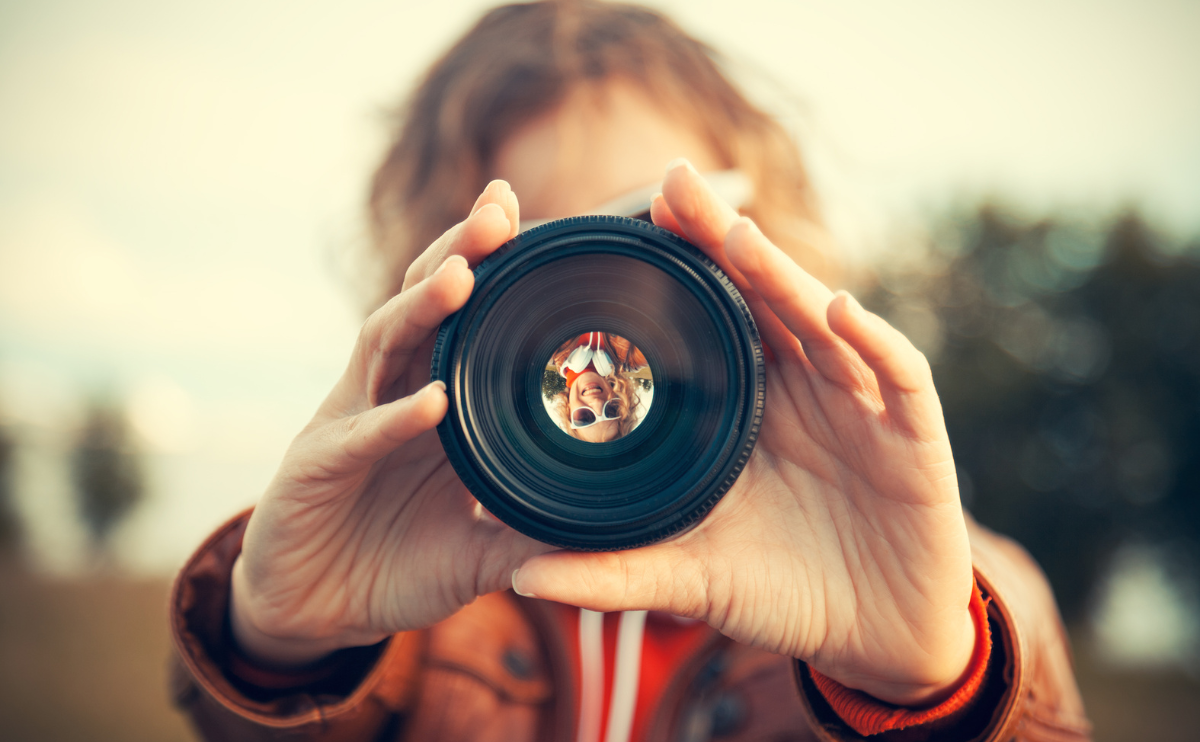In photography, the lens is just as important as the camera body. A lens can dramatically affect the way your photos turn out, influencing factors such as sharpness, depth of field, and exposure. Whether you’re a professional photographer or just starting out, understanding the different types of photography lenses can help you choose the right one for your needs and take your photography to the next level.
Types of Photography Lenses
- Standard Lenses (50mm)
- Best for: General photography, street photography, portraits, and everyday use.
- Description: Often referred to as “normal lenses,” 50mm lenses are known for their versatile, all-around performance. They offer a natural perspective similar to the human eye, making them ideal for various shooting scenarios.
- Key Features: Typically fast (wide aperture), which allows for great performance in low light and a shallow depth of field. These lenses are often used for portraits, as they produce a natural background blur (bokeh).
- Wide-Angle Lenses
- Best for: Landscape photography, architecture, interior shots, and group photos.
- Description: Wide-angle lenses have a short focal length (usually under 35mm) and allow you to capture a broader scene, making them ideal for photographing wide vistas and architecture.
- Key Features: A wider field of view, allowing you to fit more into the frame. These lenses can create a sense of space and scale and are excellent for capturing expansive landscapes or large group shots.
- Telephoto Lenses
- Best for: Wildlife, sports, portraiture, and long-distance shots.
- Description: Telephoto lenses have long focal lengths (typically 70mm and beyond), allowing you to capture subjects at a great distance. This makes them ideal for sports, wildlife photography, or isolating distant subjects in landscapes.
- Key Features: They allow you to zoom in on distant subjects and compress the image, which can result in unique compositions. Some telephoto lenses also offer image stabilization, making it easier to shoot at slower shutter speeds.
- Macro Lenses
- Best for: Close-up photography, product photography, nature, and capturing tiny details.
- Description: Macro lenses are specifically designed for photographing subjects up close, such as flowers, insects, or small objects. These lenses allow for a high level of detail and focus at very short distances.
- Key Features: Macro lenses provide life-size magnification or greater, allowing you to capture intricate details that might be missed by the naked eye.
- Prime Lenses
- Best for: Low light photography, portraits, street photography, and creative work.
- Description: Prime lenses have a fixed focal length, meaning you can’t zoom in or out. They are typically faster (wider apertures like f/1.4 or f/1.8) than zoom lenses and offer exceptional sharpness and image quality.
- Key Features: Their wide apertures allow for better performance in low light and can produce a shallow depth of field for beautiful background blur. Since you cannot zoom, using a prime lens often encourages more creativity and movement as you change your composition.
- Zoom Lenses
- Best for: Versatility, travel, events, and general-purpose photography.
- Description: Zoom lenses allow you to adjust the focal length to change the framing of your shot without physically moving closer or farther from the subject. These lenses cover a range of focal lengths, such as 24-70mm or 70-200mm.
- Key Features: Offering convenience and flexibility, zoom lenses allow you to quickly adapt to different shooting scenarios. While they may not offer the same image quality as prime lenses, modern zoom lenses are still highly versatile and often provide great sharpness and clarity.
- Fish-Eye Lenses
- Best for: Creative shots, panoramic views, and extreme wide-angle photography.
- Description: Fish-eye lenses are ultra-wide-angle lenses with an extremely short focal length (usually around 8mm to 16mm) that create a distinctive, spherical, and distorted effect. These lenses are great for creating dramatic and unique images.
- Key Features: Fish-eye lenses have a 180-degree field of view, resulting in a rounded, curved appearance. They are often used for creative or experimental photography and are popular in action sports and astrophotography.
- Tilt-Shift Lenses
- Best for: Architectural photography, product photography, and creative control over depth of field.
- Description: Tilt-shift lenses allow you to control perspective and depth of field by tilting and shifting the lens elements. They are particularly useful for photographing buildings, interiors, or anything where perspective distortion might occur.
- Key Features: The tilt-shift mechanism can adjust the plane of focus and straighten lines, especially useful for correcting distortion when photographing tall buildings. These lenses give photographers more control over the final image’s composition and perspective.
- Super Zoom Lenses
- Best for: Travel, wildlife, sports, and general-purpose photography.
- Description: Super zoom lenses offer an even wider focal length range than standard zoom lenses, such as 18-200mm or 24-300mm. These lenses are ideal for photographers who need flexibility and convenience in a single lens.
- Key Features: Super zoom lenses allow photographers to cover a broad range of focal lengths without needing to change lenses. They are perfect for travel or events where you might encounter varying subjects at different distances.
Factors to Consider When Choosing a Photography Lens
- Focal Length: Focal length determines the angle of view of your lens and how much zoom or magnification you get. Lenses with shorter focal lengths (wide-angle lenses) offer a wider field of view, while lenses with longer focal lengths (telephoto lenses) magnify distant subjects.
- Aperture Size (f-stop): The aperture size determines how much light the lens lets in. A wider aperture (indicated by a smaller f-number, like f/1.4 or f/2.8) is ideal for low-light situations, creating a shallow depth of field and beautiful background blur (bokeh). Lenses with a smaller aperture (higher f-number, like f/8 or f/11) offer a greater depth of field and are often used in landscape photography.
- Image Stabilization (IS/VR): Many lenses, especially telephoto lenses and zoom lenses, come with built-in image stabilization. This feature helps reduce camera shake, making it easier to shoot at slower shutter speeds or in lower light conditions without producing blurry images.
- Lens Mount: Different camera brands (Canon, Nikon, Sony, etc.) use different lens mounts, so it’s essential to choose a lens compatible with your camera body. Some brands offer adapters to use lenses from other manufacturers, but the functionality may be limited.
- Build Quality: Some lenses are built to withstand harsh conditions, with weather sealing and robust materials like magnesium alloy. If you plan to shoot in challenging environments, look for lenses designed for durability.
Popular Photography Lens Brands
- Canon: Known for producing high-quality lenses for both DSLR and mirrorless cameras, Canon’s L-series lenses are highly regarded for their sharpness and reliability.
- Nikon: Nikon lenses are also highly respected, with a wide range of options for professional and amateur photographers alike. Their Nikkor lenses are known for exceptional image quality.
- Sony: Sony offers a range of lenses, particularly for its mirrorless cameras, with the FE series providing full-frame compatibility.
- Sigma: Sigma produces a variety of third-party lenses that are compatible with several camera brands, offering excellent value for money.
- Tamron: Another third-party brand, Tamron offers lenses that are often more affordable than those from the original manufacturers, without compromising on quality.
- Fujifilm: Fujifilm’s X-series lenses are designed for their mirrorless cameras, and they are known for their sharpness and compact size.
Conclusion
Choosing the right photography lens depends on your style, needs, and budget. Whether you’re a landscape photographer looking for a wide-angle lens, a portrait photographer in need of a prime lens, or a sports photographer looking for a telephoto lens, there is a perfect lens for every situation. Understanding the different types of lenses and their features will help you make an informed decision and elevate your photography to new heights.










